Popular categories
Looking for a yarn?

100% Alpaca
from 7.00 BGN /50g
The yarn cost is calculated from the pattern’s smallest size and the yarn’s cheapest product type. Looking for an even better price? You might find it on the DROPS Deals!
Prairie Song
Knitted DROPS jacket with lace pattern and round yoke in "Alpaca". Size: S - XXXL.
DROPS design: Pattern no Z-544
--------------------------------------------------------
Size: S - M - L - XL - XXL - XXXL
Materials: DROPS ALPACA from Garnstudio
Colour no 3112, powder pink:
300-350-350-400-450-500 g
DROPS DOUBLE POINTED NEEDLES AND CIRCULAR NEEDLE (40 and 80 cm) SIZE 3 mm - or size needed to get 24 sts x 32 rows in stocking st = 10 x 10 cm. And 24 sts x 45 rows with pattern on yoke = 10 x 10 cm.
DROPS DOUBLE POINTED NEEDLES AND CIRCULAR NEEDLE (80 cm) SIZE 2.5 mm - for edges.
DROPS MOTHER-OF-PEARL BUTTON w/holes, NO 521: 7-7-8-8-8-8 pieces
-------------------------------------------------------
Alternative Yarn – See how to change yarns here
Yarn Groups A to F – Use the same pattern and change the yarn here
Yarn usage using an alternative yarn – Use our yarn converter here
-------------------------------------------------------

100% Alpaca
from 7.00 BGN /50g
The yarn cost is calculated from the pattern’s smallest size and the yarn’s cheapest product type. Looking for an even better price? You might find it on the DROPS Deals!
- English (UK/cm), Bulgaria
- Česky - not translated
- Dansk
- Deutsch
- Eesti keel
- English (UK/cm)
- English (US/in)
- Español
- Français
- Íslenska - not translated
- Italiano
- Magyar
- Nederlands
- Norsk
- Polski
- Português
- Suomi
- Svenska
- English (UK/cm), Croatia
- English (UK/cm), Greece
- English (UK/cm), Latvia
- English (UK/cm), Lithuania
- English (UK/cm), Romania
- English (UK/cm), Slovenia
- Česky, Slovakia - not translated
Pattern instructions
PATTERN:
See diagram M.1 to M.3. The diagram shows the pattern from RS. NOTE! See diagram M.3C for size!
BUTTON HOLES:
Cast off for button holes on right front band.
1 BUTTON HOLE = cast off 4th st from edge. On next row cast on 1 new st over the cast off st.
Cast off for button holes when piece measures:
SIZE S: 2, 11, 19, 28, 36, 45 and 54 cm
SIZE M: 2, 11, 20, 29, 38, 47 and 56 cm
SIZE L: 2, 10, 18, 26, 34, 42, 50 and 58 cm
SIZE XL: 2, 10, 18, 27, 35, 43, 51 and 60 cm
SIZE XXL: 2, 11, 19, 28, 36, 45, 53 and 62 cm
SIZE XXXL:2, 11, 20, 29, 38, 47, 56 and 64 cm
I.e. approx. 2 cm remain until finished measurements after last button hole.
--------------------------------------------------------
JACKET:
Worked back and forth on circular needle from mid front.
Cast on 199-219-239-259-289-319 sts (incl 6 band sts each side towards mid front) on circular needle 2.5 mm with Alpaca. Work first row from RS as follows: 6 band sts in GARTER ST - see explanation above, repeat M.1 and finish with 6 band sts in GARTER ST. Continue the pattern like this - NOTE: On 7th row in M.1 K last st before band. REMEMBER BUTTON HOLES ON BAND - see explanation above. After M.1 switch to circular needle size 3 mm and work next row from RS as follows: 6 band sts as before, 1 st in stocking st, M.2A until 12 sts remain, finish with M.2B (= 6 sts) and 6 band sts as before. Continue the pattern like this. REMEMBER THE KNITTING TENSION! Insert 2 markers in the piece after 53-58-63-68-75-83 sts each side = 93-103-113-123-139-153 sts between markers on back piece. When piece measures 8-8-9-9-10-10 cm, inc 1 st each side of both markers (= 4 sts inc). Repeat the inc every 6 cm a total of 5 times = 219-239-259-279-309-339 sts - NOTE: Work inc sts in stocking st until they can be worked in pattern each side. When piece measures approx. 37-38-39-40-41-42 cm - adjust so that next row is worked from RS and so that 3 or 5 rows in stocking st are worked after 1 row with lace pattern - cast off 10-10-10-12-12-12 sts each side for armholes (i.e. 5-5-5-6-6-6 sts both sides of markers) = 93-103-113-121-137-151 sts on back piece and 53-58-63-67-74-82 sts on each front piece. Put piece aside and knit the sleeves.
SLEEVE:
Cast on 56-56-58-60-62-64 sts on double pointed needles size 2.5 mm with Alpaca. Work M.1. Insert a marker at beg of round (= mid under sleeve). After M.1 switch to double pointed needles size 3 mm and work next round as follows: 0-0-1-2-3-4 sts in stocking st, M.2A until 6-6-7-8-9-10 sts remain, finish with M.2B (= 6 sts) and 0-0-1-2-3-4 sts in stocking st. Continue like this. When piece measures 8-9-8-9-7-12 cm, inc 2 sts mid under sleeve. Repeat inc every 3½-2½-2½-2-2-1½ cm a total of 10-13-14-16-17-18 times = 76-82-86-92-96-100 sts - NOTE: Work inc sts in stocking st until they can be worked in pattern. When piece measures approx. 43-43-42-42-41-41 cm (NOTE! Shorter measurements in the larger sizes because of longer sleeve cap and broader shoulder width) - adjust so that same no of rounds in stocking st have been worked after 1 round with lace pattern as on body - cast off 10-10-10-12-12-12 sts mid under sleeve (i.e. 5-5-5-6-6-6 sts each side of marker) = 66-72-76-80-84-88 sts. Slip sts on a stitch holder and knit another sleeve.
YOKE:
Slip sleeves on to same circular needle as body where armholes were cast off = 331-363-391-415-453-491 sts. Work 1-1-1-1-1-3 rows in stocking st (1st row = P from WS and work bands in garter st as before until finished measurements) while AT THE SAME TIME dec 10-14-14-10-6-2 sts evenly (do not dec over bands) = 321-349-377-405-447-489 sts. Work next row from RS as follows: 6 band sts, M.3A over the next 308-336-364-392-434-476 sts (1 repetition = 14 sts), finish with first st in M.3A and 6 band sts. Continue the pattern like this. NOTE: On 7th row in M.3A K last st before band. After M.3A, 299-325-351-377-416-455 sts remain on needle. Now work M.3B with 6 band sts each side - finish with row before arrow in your size (i.e. finish after K 1 row from WS). After M.3B, 299-325-351-349-385-421 sts remain on needle. Work next row from RS as follows - see diagram for correct size: 6 band sts, M.3C until 7 sts remain (1 repetition = 13-13-13-12-12-12 sts), finish with first st in M.3C and 6 band sts - NOTE: On the rows that start with K 2 tog at beg of 1 repetition, K last st before band. Continue the pattern like this. After M.3C, 145-157-169-181-199-217 sts remain on needle.
NECKLINE:
Switch to circular needle 2.5 and work M.1 with 6 band sts each side (on 7th row K last st before band) - AT THE SAME TIME on 1st row dec 26-34-42-50-64-76 sts evenly (do not dec over bands) = 119-123-127-131-135-141 sts. After M.1 loosely cast off with K from RS.
ASSEMBLY:
Sew the openings under the sleeves. Sew on buttons.
This pattern has been corrected. Click here to see the correction/s.
New diagram M.2 has been added.
Diagram

|
= K from RS, P from WS |

|
= P from RS, K from WS |

|
= 1 YO between 2 sts |

|
= 1 Bobble: Work 5 sts in this st by working alternately in front and back loop of stitch, turn piece. Work 4 rows in stocking st over these 5 sts. Then slip 2nd st on right needle over 1st st, then slip 3rd st over 1st st, then 4th st of 1st st and finally 5th st over 1st st (= 1 st remain) |

|
= K2 tog |

|
= slip 1 st as if to K, K1, psso |

|
= slip 1 st as if to K, K 2 tog, psso |

|
= P2 tog |

|
= P2 twisted tog (i.e. work in back loop of st instead of front) |
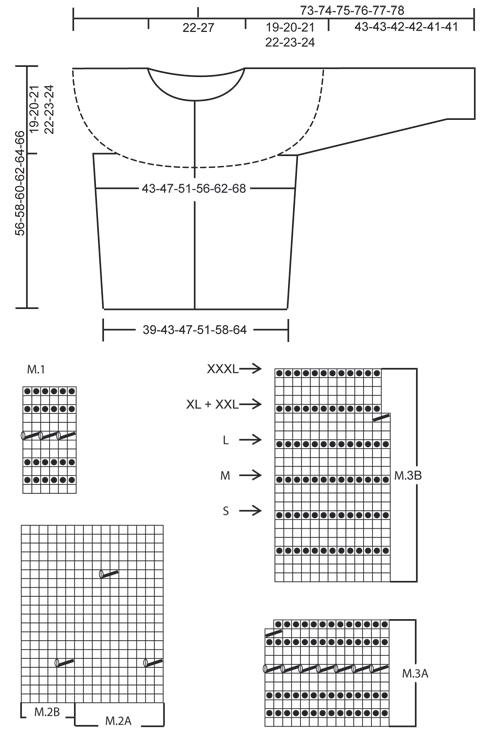

What can you do with our patterns? You can share DROPS patterns online, using the pattern original picture, materials, name and number. But you are NOT ALLOWED to reproduce the complete pattern digitally in any way. Yarn stores are welcome to use the DROPS pattern database to promote the sale of our assortment. You can print out our patterns, make as many copies as you’d like. The only thing we ask is that you don't make any changes / additions to the original printed document. And that the patterns according to the DROPS philosophy are given out to the consumers for free. Editorials that wish to publish our patterns in printed books or magazines can contact us for more information. The sale of garments based on DROPS patterns is permitted as long as they are sold as single items or per order. Further commercial use of the patterns is not permitted. It has to be clearly stated that the garment is made based on a design from DROPS DESIGN. The use of clothing labels of which DROPS DESIGN forms part is conditioned by the inclusion of the following text: “A DROPS DESIGN made by …..”. The use of DROPS photos for marketing purposes/sales is only permitted in connection with the use/sale of DROPS products. The photos may not be cut or edited and the logo should be clearly visible.
We reserve the right to withdraw the permission for use of our patterns at any time, notwithstanding the reason.
Each of our patterns has specific tutorial videos to help you.
These step-by-step tutorials might also help you:
Why is the knitting/crochet tension so important?
Knitting tension is what determines the final measurements of your work, and is usually measured per 10 x 10 cm. It is provided like so: number of stitches in width x number of rows in height - eg: 19 stitches x 26 rows = 10 x 10 cm.
The knitting tension is very individual; some people knit/crochet loosely while others work tightly. You adjust the knitting tension with the needle size, which is why the suggested needle size is only meant as a guide! You need to adjust this (up or down) to ensure that YOUR knitting tension matches the knitting tension provided in the pattern. If you work with a different knitting tension than provided you will have a different yarn consumption, and your work will have different measurements than what the pattern suggests.
The knitting tension also determines which yarns can replace each other. As long as you achieve the same knitting tension you can replace one yarn with another.
See DROPS lesson: How to measure your tension/gauge
See DROPS video: How to make a gauge tension swatch
How do I know how many balls of yarn I need?
The required amount of yarn is provided in grams, eg: 450 g. To calculate how many balls you’ll need you first need to know how many grams are in 1 ball (25g, 50g or 100g). This information is available if you click on the individual yarn quality on our pages. Divide the amount required with the amount of each ball. For example, if each ball is 50g (the most common amount), the calculation will be as follows: 450 / 50 = 9 balls.
Can I use a different yarn than what the pattern suggests?
The important thing when changing from one yarn to another is that the knitting/crochet tension remains the same. This is so that the measurements of the finished piece will be the same as on the sketch provided. It is easier to achieve the same knitting tension using yarns from the same yarn group. It is also possible to work with multiple strands of a thinner yarn to achieve the knitting tension of a thicker one. Please try our yarn converter. We recommend you to always work a test swatch.
Please NOTE: when changing yarn the garment might have a different look and feel to the garment in the photo, due to individual properties and qualities of each yarn.
See DROPS lesson: Can I use a different yarn than the one mentioned in the pattern?
What are the yarn groups?
All our yarns are categorised into yarn groups (from A to F) according to thickness and knitting tension – group A contains the thinnest yarns and group F the thickest. This makes it easier for you to find alternative yarns to our patterns, should you wish to switch yarn. All yarns within the same group have a similar knitting tension and can easily replace each other. However, different yarn qualities have different structures and properties which will give the finished work a unique look and feel.
How do I use the yarn calculator?
At the top of all our patterns you’ll find a link to our yarn calculator, which is a helpful tool should you wish to use a different yarn than suggested. By filling in the yarn quality you wish to replace, the amount (in your size) and number of strands, the calculator will present good alternative yarns with the same knitting tension. Additionally it will tell you how much you’ll require in the new qualities and whether you’ll need to work with multiple strands. Most skeins are 50g (some are 25g or 100g).
If the pattern is worked with multiple colours, every colour will have to be calculated separately. Similarly, if the pattern is worked with several strands of different yarns (for example 1 strand Alpaca and 1 strand Kid-Silk) you will have to find alternatives for each, individually.
Why do you show discontinued yarns in the patterns?
Since different yarns have different qualities and textures we have chosen to keep the original yarn in our patterns. However, you can easily find options among our available qualities by using our yarn calculator, or simply pick a yarn from the same yarn group.
It is possible that some retailers still have discontinued yarns in stock, or that someone has a few skeins at home that they would like to find patterns for.
The yarn calculator will provide both alternative yarn as well as required amount in the new quality.
What size should I knit?
If you think it's hard to decide what size to make, it can be a good idea to measure a garment you own already and like the size of. Then you can pick the size by comparing those measures with the ones available in the pattern's size chart.
You'll find the size chart at the bottom of the pattern.
See DROPS lesson: How to read size chart
Why do I get the wrong knitting tension with the suggested needle size?
The needle size provided in the pattern serves only as a guide, the important thing is to follow the knitting tension. And since knitting tension is very individual, you will have to adjust the needle size to ensure that YOUR tension is the same as in the pattern – maybe you’ll have to adjust 1, or even 2 needle sizes, up or down to achieve the correct tension. For this, we recommend that you work test swatches.
Should you work with a different knitting tension than the one provided, the measurements of the finished garment might deviate from the measurement sketch.
See DROPS lesson: How to measure your tension/gauge
See DROPS video: How to make a tension/gauge swatch
Why is the pattern worked top-down?
Working a garment top-down provides more flexibility and room for personal adjustment. For example it is easier to try the garment on while working, as well as making adjustments to length of yoke and shoulder caps.
The instructions are carefully explaining every step, in the correct order. Diagrams are adjusted to the knitting direction and are worked as usual.
How do I work according to a knitting diagram?
The diagram depicts all rows/rounds, and every stitch seen from the right side. It is read from bottom to top, from right to left. 1 square = 1 stitch.
When working back and forth, every other row is worked from the right side and every other row is worked from the wrong side. When working from the wrong side, the diagram will have to be worked reversed: from left to right, knit stitches are purled, purl stitches are knit etc.
When working in the round every round is worked from the right side and the diagram are worked from right to left on all rounds.
See DROPS lesson: How to read knitting diagrams
How do I work according to a crochet diagram?
The diagram depicts all rows/rounds, and every stitch seen from the right side. It is worked from bottom to top, from right to left.
When working back and forth every other row is worked from the right side: from right to left and every other row is worked from the wrong side: from left to right.
When working in the round, every row in the diagram are worked from the right side, from right to left.
When working a circular diagram you start in the middle and work your way outwards, counter clockwise, row by row.
The rows usually start with a given number of chain stitches (equivalent to the height of the following stitch), this will either be depicted in the diagram or explained in the pattern.
See DROPS lesson: How to read crochet diagrams
How do I work several diagrams simultaneously on the same row/round?
Instructions for working several diagrams after each other on the same row/round, will often be written like so: “work A.1, A.2, A.3 a total of 0-0-2-3-4 times". This means you work A.1 once, then A.2 is worked once, and A.3 is repeated (in width) the number of times provided for your size – in this case like so: S = 0 times, M = 0 times, L=2 times, XL= 3 times and XXL = 4 times.
The diagrams are worked as usual: begin with the first row in A.1, then work the first row in A.2 etc.
See DROPS lesson: How to read knitting diagrams
See DROPS lesson: How to read crochet diagrams
Why are the sleeves shorter in larger sizes?
The total width of the garment (from wrist-to-wrist) will be larger in the larger sizes, despite the actual sleeves being shorter. The larger sizes have longer sleeve caps and wider shoulders, so there will be a good fit in all sizes.
Where on the garment is the length measured?
The measurement sketch/schematic drawing provides information regarding the full length of the garment. If it’s a jumper or a jacket the length is measured from the highest point on the shoulder closest to the neckline, and straight down to the bottom of the garment. It is NOT measured from the tip of shoulder. Similarly, the length of yoke is measured from the highest point on the shoulder and down to where yoke is split into body and sleeves.
On a jacket measures are never taken along bands, unless specifically stated. Always measure inside band stitches when measuring the length.
See DROPS lesson: How to read a schematic drawing
What is a repeat?
Diagrams are often repeated on the round or in height. 1 repeat is the diagram the way it appears in the pattern. If it says to work 5 repeats of A.1 in the round, then you work A.1 a total of 5 times after/next to each other in the round. If it says to work 2 repeats of A.1 vertically/in height you work the entire diagram once, then begin again at the start and work the entire diagram one more time.
Why does the piece start with more chain stitches than it’s worked with?
Chain stitches are slightly narrower than other stitches and to avoid working the cast-on edge too tight, we simply chain more stitches to begin with. The stitch count will be adjusted on the following row to fit the pattern and measurement sketch.
Why increase before the rib edge when the piece is worked top-down?
The rib edge is more elastic and will contract slightly compared to, for example, stocking stitch. By increasing before the rib edge, you avoid a visible difference in width between the rib edge and the rest of the body.
Why increase in the cast-off edge?
It’s very easy to cast off too tightly, and by making yarn overs while casting off (and simultaneously casting these off) you avoid a too tight cast off edge.
See DROPS video: How to bind off with yarn overs (yo)
How do I increase/decrease on every 3rd and 4th row/round alternately?
To achieve an even increase (or decrease) you can increase on, for example: every 3rd and 4th row alternately, like so: work 2 rows and increase on the 3rd row, work 3 rows and increase on the 4th. Repeat this until the increase is complete.
See DROPS lesson: Increase or decrease 1 st on every 3rd and 4th row alternately
How can I work a jacket in the round instead of back and forth?
Should you prefer to work in the round instead of back and forth, you may of course adjust the pattern. You’ll need to add steeks mid-front (usually 5 stitches), and follow the instructions. When you would normally turn and work from the wrong side, simply work across the steek and continue in the round. At the end you’ll cut the piece open, pick up stitches to work bands, and cover the cut edges.
See DROPS video: How to knit steeks and cut open
Can I work a jumper back and forth instead of in the round?
Should you prefer to work back and forth instead of in the round, you may of course adjust the pattern so you work the pieces separately and then assemble them at the end. Divide the stitches for the body in 2, add 1 edge stitch in each side (for sewing) and work the front and back pieces separately.
See DROPS lesson: Can I adapt a pattern for circular needles into straight needles?
Why is the pattern slightly different than what I see in the photo?
Pattern repeats can vary slightly in the different sizes, in order to get the correct proportions. If you’re not working the exact same size as the garment in the photo, yours might deviate slightly. This has been carefully developed and adjusted so that the complete impression of the garment is the same in all sizes.
Make sure to follow instructions and diagrams for your size!
How do I make a women’s size garment into a men’s size one?
If you have found a pattern you like which is available in women’s size it’s not very difficult to convert it to men’s size. The biggest difference will be the length of sleeves and body. Start working on the women size that you think would fit across the chest. The additional length will be worked right before you cast off for the armhole/sleeve cap. If the pattern is worked top-down you can add the length right after the armhole or before the first decrease on sleeve.
Regarding additional yarn amount, this will depend on how much length you add, but it is better with a skein too many than too few.
How do I prevent a hairy garment from shedding?
All yarns will have excess fibres (from production) that might come off as lint or shedding. Brushed yarns (ie hairier yarns) have more of these loose, excess fibres, causing more shedding.
Shedding also depends on what is worn under or over the garment, and whether this pulls at the yarn fibres. It’s therefore not possible to guarantee that there will be no shedding
Below are some tips on how to get the best result when working with hairier yarns:
1. When the garment is finished (before you wash it) shake it vigorously so the looser hairs come off. NOTE: do NOT use a lint roller, brush or any method that pulls at the yarn.
2. Place the garment in a plastic bag and put it in your freezer - the temperature will cause the fibres to become less attached to each other, and excess fibres will come off easier.
3. Leave in the freezer for a few hours before taking it out and shaking it again.
4. Wash the garment according to the instructions on the yarn label.
Why does my garment pill?
Pilling is a natural process that happens to even the most exclusive of fibers. It's a natural sign of wear and tear that is hard to avoid, and that is most visible in high friction areas of your garment like a sweater's arms and cuffs.
You can make your garment look as new by removing the pilling, using a fabric comb or a pill/lint remover.
In the meantime, you can read the questions and answers that others have left to this pattern or join the DROPS Workshop on Facebook to get help from fellow knitters/crocheters!
You might also like...
Prairie Song |
||||||||||||||||||||||||||||
 |
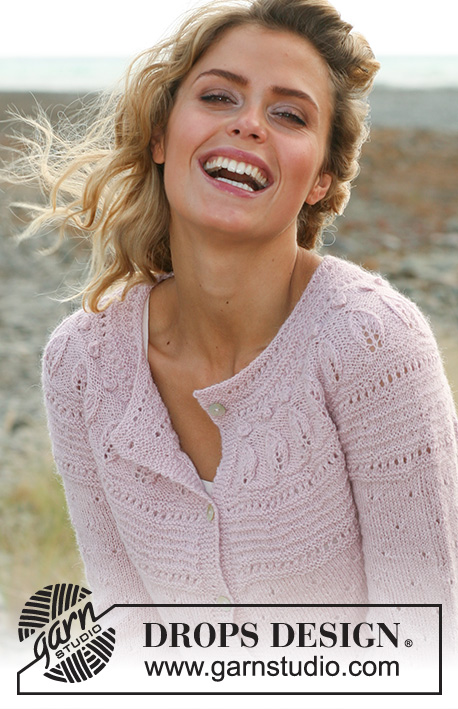 |
|||||||||||||||||||||||||||
Knitted DROPS jacket with lace pattern and round yoke in "Alpaca". Size: S - XXXL.
DROPS 127-13 |
||||||||||||||||||||||||||||
|
GARTER ST (back and forth on needle): K all rows. PATTERN: See diagram M.1 to M.3. The diagram shows the pattern from RS. NOTE! See diagram M.3C for size! BUTTON HOLES: Cast off for button holes on right front band. 1 BUTTON HOLE = cast off 4th st from edge. On next row cast on 1 new st over the cast off st. Cast off for button holes when piece measures: SIZE S: 2, 11, 19, 28, 36, 45 and 54 cm SIZE M: 2, 11, 20, 29, 38, 47 and 56 cm SIZE L: 2, 10, 18, 26, 34, 42, 50 and 58 cm SIZE XL: 2, 10, 18, 27, 35, 43, 51 and 60 cm SIZE XXL: 2, 11, 19, 28, 36, 45, 53 and 62 cm SIZE XXXL:2, 11, 20, 29, 38, 47, 56 and 64 cm I.e. approx. 2 cm remain until finished measurements after last button hole. -------------------------------------------------------- JACKET: Worked back and forth on circular needle from mid front. Cast on 199-219-239-259-289-319 sts (incl 6 band sts each side towards mid front) on circular needle 2.5 mm with Alpaca. Work first row from RS as follows: 6 band sts in GARTER ST - see explanation above, repeat M.1 and finish with 6 band sts in GARTER ST. Continue the pattern like this - NOTE: On 7th row in M.1 K last st before band. REMEMBER BUTTON HOLES ON BAND - see explanation above. After M.1 switch to circular needle size 3 mm and work next row from RS as follows: 6 band sts as before, 1 st in stocking st, M.2A until 12 sts remain, finish with M.2B (= 6 sts) and 6 band sts as before. Continue the pattern like this. REMEMBER THE KNITTING TENSION! Insert 2 markers in the piece after 53-58-63-68-75-83 sts each side = 93-103-113-123-139-153 sts between markers on back piece. When piece measures 8-8-9-9-10-10 cm, inc 1 st each side of both markers (= 4 sts inc). Repeat the inc every 6 cm a total of 5 times = 219-239-259-279-309-339 sts - NOTE: Work inc sts in stocking st until they can be worked in pattern each side. When piece measures approx. 37-38-39-40-41-42 cm - adjust so that next row is worked from RS and so that 3 or 5 rows in stocking st are worked after 1 row with lace pattern - cast off 10-10-10-12-12-12 sts each side for armholes (i.e. 5-5-5-6-6-6 sts both sides of markers) = 93-103-113-121-137-151 sts on back piece and 53-58-63-67-74-82 sts on each front piece. Put piece aside and knit the sleeves. SLEEVE: Cast on 56-56-58-60-62-64 sts on double pointed needles size 2.5 mm with Alpaca. Work M.1. Insert a marker at beg of round (= mid under sleeve). After M.1 switch to double pointed needles size 3 mm and work next round as follows: 0-0-1-2-3-4 sts in stocking st, M.2A until 6-6-7-8-9-10 sts remain, finish with M.2B (= 6 sts) and 0-0-1-2-3-4 sts in stocking st. Continue like this. When piece measures 8-9-8-9-7-12 cm, inc 2 sts mid under sleeve. Repeat inc every 3½-2½-2½-2-2-1½ cm a total of 10-13-14-16-17-18 times = 76-82-86-92-96-100 sts - NOTE: Work inc sts in stocking st until they can be worked in pattern. When piece measures approx. 43-43-42-42-41-41 cm (NOTE! Shorter measurements in the larger sizes because of longer sleeve cap and broader shoulder width) - adjust so that same no of rounds in stocking st have been worked after 1 round with lace pattern as on body - cast off 10-10-10-12-12-12 sts mid under sleeve (i.e. 5-5-5-6-6-6 sts each side of marker) = 66-72-76-80-84-88 sts. Slip sts on a stitch holder and knit another sleeve. YOKE: Slip sleeves on to same circular needle as body where armholes were cast off = 331-363-391-415-453-491 sts. Work 1-1-1-1-1-3 rows in stocking st (1st row = P from WS and work bands in garter st as before until finished measurements) while AT THE SAME TIME dec 10-14-14-10-6-2 sts evenly (do not dec over bands) = 321-349-377-405-447-489 sts. Work next row from RS as follows: 6 band sts, M.3A over the next 308-336-364-392-434-476 sts (1 repetition = 14 sts), finish with first st in M.3A and 6 band sts. Continue the pattern like this. NOTE: On 7th row in M.3A K last st before band. After M.3A, 299-325-351-377-416-455 sts remain on needle. Now work M.3B with 6 band sts each side - finish with row before arrow in your size (i.e. finish after K 1 row from WS). After M.3B, 299-325-351-349-385-421 sts remain on needle. Work next row from RS as follows - see diagram for correct size: 6 band sts, M.3C until 7 sts remain (1 repetition = 13-13-13-12-12-12 sts), finish with first st in M.3C and 6 band sts - NOTE: On the rows that start with K 2 tog at beg of 1 repetition, K last st before band. Continue the pattern like this. After M.3C, 145-157-169-181-199-217 sts remain on needle. NECKLINE: Switch to circular needle 2.5 and work M.1 with 6 band sts each side (on 7th row K last st before band) - AT THE SAME TIME on 1st row dec 26-34-42-50-64-76 sts evenly (do not dec over bands) = 119-123-127-131-135-141 sts. After M.1 loosely cast off with K from RS. ASSEMBLY: Sew the openings under the sleeves. Sew on buttons. |
||||||||||||||||||||||||||||
Diagram explanations |
||||||||||||||||||||||||||||
|
||||||||||||||||||||||||||||

|
||||||||||||||||||||||||||||

|
||||||||||||||||||||||||||||
|
Have you made this or any other of our designs? Tag your pictures in social media with #dropsdesign so we can see them! Do you need help with this pattern?You'll find tutorial videos, a Comments/Questions area and more by visiting the pattern on garnstudio.com. © 1982-2024 DROPS Design A/S. We reserve all rights. This document, including all its sub-sections, has copyrights. Read more about what you can do with our patterns at the bottom of each pattern on our site. |
||||||||||||||||||||||||||||
With over 40 years in knitting and crochet design, DROPS Design offers one of the most extensive collections of free patterns on the internet - translated to 17 languages. As of today we count 304 catalogues and 11422 patterns - 11422 of which are translated into English (UK/cm).
We work hard to bring you the best knitting and crochet have to offer, inspiration and advice as well as great quality yarns at incredible prices! Would you like to use our patterns for other than personal use? You can read what you are allowed to do in the Copyright text at the bottom of all our patterns. Happy crafting!







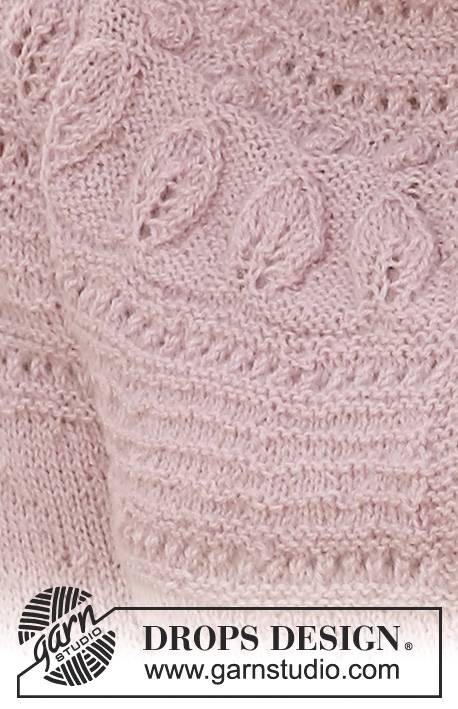

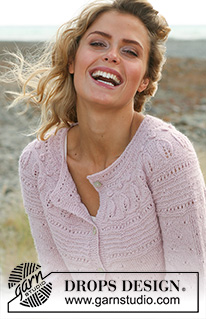




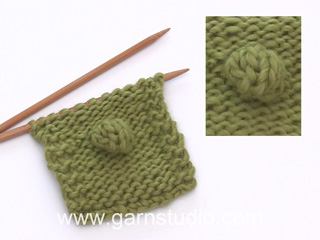






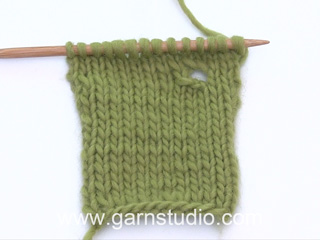



























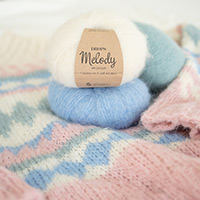
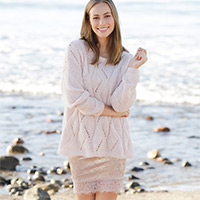

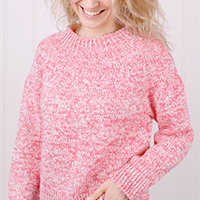


Comments / Questions (39)
Are the measurements for sizing always the same. Many of the patterns like this one do not say what measurement S, M, L etc are. Is there a standard?
01.03.2015 - 18:33DROPS Design answered:
Dear Mrs Griffiths, you will find at the end of each pattern a measurement chart with all measures for each size, taken flat, from side to side. Compare these to a similar garment you have and like the shape to find out the matching size. Happy knitting!
02.03.2015 - 10:06Tjek lige mønster forklaringen.. Ser ud til at i har blandet to symboler sammen cirklen og den sorte firkant.. Vil meget gerne have en rettelse på siden hvis det er rigtigt..
15.06.2014 - 13:21DROPS Design answered:
Hej Charlotte. Mönsterforklaringen er skam rigtig nok. Den sorte cirkel er vrang fra retsiden, ret fra vrangen og den sorte firkant er boblen.
17.06.2014 - 17:07Tusen takk skal du ha! Det var snilt av deg å forklare dette.
12.06.2014 - 09:49Mønster 3C- der midt i 3C (r.19) vi kaster 1m 2 ganger, men strikker 2m sammen bare en gang. Vi strikker vrang, kast, rett, kast, vrang-til sammen 5 masker. Tilbake er det bare 3 masker rett strikk. Hvordan skal jeg strikke over kastene?
09.06.2014 - 23:11DROPS Design answered:
Hei Tatiana. Du tager 2 masker ud i raekke 19. Du har 11 m per gentagelse og strikker 5 vr, 1 kast, 1 r, 1 kast og 5 vr. Naar du saa strikker tilbage over kastene strikker du 5 r (vr fra rettsiden), 3 vr (r fra rettsiden) og 1e og 3e af disse masker er dine kast og 5 r = du har nu 13 m per gentagelse.
10.06.2014 - 14:08Le istruzioni della GIACCA x lo scalfo manica riportano "DIMINUIRE da entrambi i lati x gli scalfi 10-10-ecc." mentre x le MANICHE si dice "chiudere le 10-10-ecc., sotto la manica". Credo che anche x la giacca si debbano CHIUDERE e non DIMINUIRE le maglie. Quindi dovrò cucire lo scalfo alla manica alla fine? Come si inseriscono le maniche sul ferro x lavorare lo sprone? Nel vuoto creato dalla chiusura delle maglie di cui parlavo sopra? Esiste un video? Grazie mille!
11.03.2014 - 14:31DROPS Design answered:
Buongiorno Jessyca. La ringraziamo della segnalazione, abbiamo corretto il testo. Alla fine del lavoro, dovrà cucire le m intrecciate sotto le maniche. Per inserire le m delle maniche sullo stesso ferro, per lo sprone, può fare riferimento al seguente video: Ci riscriva se è ancora in difficoltà. Buon lavoro!
12.03.2014 - 10:41Bonjour, Pourriez-vous m'expliquer comment on fait les "nope", car je ne comprends pas les explications du diagramme ?
05.02.2014 - 19:42DROPS Design answered:
Bonjour Mme Lauvergne, la vidéo ci-dessous devrait vous aider à comprendre comment faire 1 nope. Bon tricot !
06.02.2014 - 08:43Kan jeg strikke denne model i baby alpaca silk? med samme strikkefasthed?
26.11.2013 - 17:55DROPS Design answered:
Ja Baby Alpaca Silk og Alpaca tilhører samme garngruppe og kan strikkes på samme opskrifter med samme strikkefasthed. Men husk at lave en strikkeprøve så du kan se at du overholder strikkefastheden!
27.11.2013 - 11:19Ik ben met de pas van het vest bezig. maar het is me niet helemaal duidelijk. Als ik M.3A over 405 st. brei, dat er dan nade 7e nld.nog 377 st. over zijn. Moet er geminderd worden? Mvrgr.
18.08.2013 - 18:30DROPS Design answered:
Hoi Ria. In de 7e nld moet je de laatste 3 st van M.3A voor de voorbies recht breien. Pas in de 11e nld van M.3A wordt er 1 st geminderd per herhaling door 2 st r samen te breien = 28 st minder over de hele nld = 377 st over op de nld.
19.08.2013 - 12:51The instructions don't say whether the charts are for both RS and WS or whether they are just RS instructions with WR being purl. Please clarify.
29.03.2013 - 14:08DROPS Design answered:
Dear Kerry, pattern shows all rows of the pattern, from RS as well as from WS, but both shown from RS, ie a white square is K from RS but from WS you will have to P this st. Happy knitting!
29.03.2013 - 14:48Synes ikke mønster 3C er særlig godt beskrevet om hvor mange masker, der skal strikkes mellem mønstrene og om det skal være glatstr. eller omvendt glatstr. Jeg tror jeg har regnet mig frem til det ved at se på forstørrelsen af billedet. Er der mulighed for at få nærmere oplysninger om dette?
07.01.2013 - 16:46DROPS Design answered:
Efter M.3B har du f.eks 299 m paa pinden (str S). Du skal da strikke 6 forkantm, M.3C til der 7 m tilbage paa p, 1 rapport af M.3C (förste raekke) er 13 m dvs 22 gentagelser af M.3C. Du slutter af med at strikke den förste (=1 m) af M.3C igen og 6 forkantm. Strik videre paa denne maade. Du skal IKKE strikke nogle masker i mellem mönstret.
17.01.2013 - 11:59